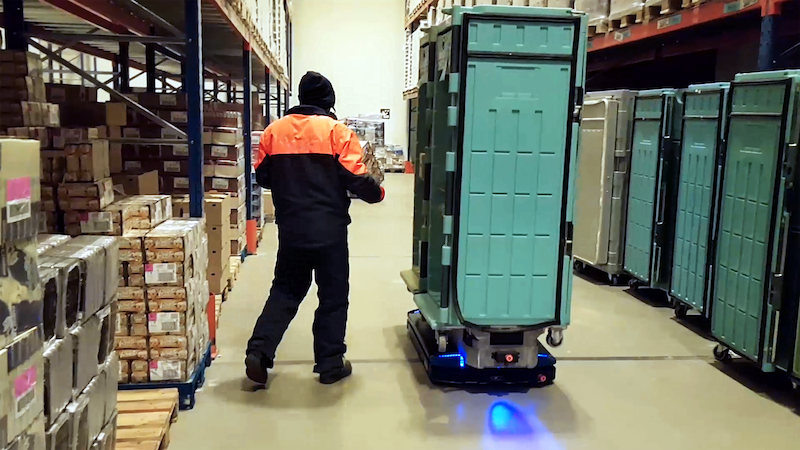
How Can Robots Help to Improve Efficiency in Logistics Operations?
This is a big question for the logistics industry, is it possible to improve efficiency with robotics in the logistics industry?
Well, the answer to this question is not simple because logistics is different from other industries, and unlike other industries, it is not always clear how robots can offer their services in the logistics process.
But we are seeing an increase in the number of robots being used in the logistics industry which means that after all, robots can offer their services in this industry.
If you are someone belonging to the logistics industry then you can benefit from the integration of robots into logistics operations and improve the efficiency of your logistics operations.
Logistics efficiency basically means that your business is able to transport, store, and distribute the material with minimal wastage. An efficient logistics company is able to save money, energy, time, and natural resources.
In other businesses and processes, it is easy to measure efficiency because there are simple and defined formulas that can easily determine efficiency but in logistics, that is not the case.
There are various factors that must be considered to measure the efficiency which makes it difficult to calculate the efficiency in logistics but sometimes it is better to avoid using complex formulas and simply look at the processes for their efficiency.
How to Make Logistics Operations More Efficient With Robots?
So how can logistics operations be made more efficient with robots? Well, in logistics there are many tasks that are dull and repetitive.
While performing these tasks, humans often get bored and over the course of long periods, their performance starts to get worse which results in inefficiency.
One such example that we have available is the job of moving boxes onto pallets which is a dull and repetitive task that is very important for any logistics process and cannot be eliminated.
Because this task is a repetitive task, human workers often get bored with moving boxes onto pallets which decreases not only their productivity but also contributes to inefficiency.
With the help of robots, such repetitive tasks can be automated which can help to improve efficiency. This can also free the labor and allow human workers to deal with other tasks that can’t be automated.
Not all tasks can be automated and handed over to robots because where human intellect works, robots cannot.
So, let’s have a look at some of the common robotic applications that are deployed in the logistics industry.
Palletizing
The first common robotic application that is now widely used all over the industry is palletizing, which is a job that is perfect for robotics because it is a dull and repetitive job, yet an important job that needs to be done.
Human workers who perform the job of palletizing can get injured because this job requires high flexibility and at the same time, get bored too because doing the same dull job over and over again becomes boring unless they keep themselves refreshed by playing Solitaire every once in a while.
Robots are a perfect choice for automating the whole process of palletizing because they are more flexible than other technologies out there and the best thing about robots is that they can be programmed to handle the boxes or items that need to be palletized.
Robotics are now widely deployed all over the logistics industry to help automate the process of palletizing and improve the efficiency of logistics operations.
Pick & Place
Pick and Place is a common task for any logistics company because there are different logistics processes that require objects to be picked and placed at several places.
For instance, the packaging of items involved picking and placing items in their respective boxes just like you pick and place cards in the game of Spider Solitaire.
Pick and Place is another task for which robots are perfect. They are much more consistent, efficient, and productive than humans in this regard. Plus, these robots don’t tire out and can be programmed easily to handle different items.
Machine Tending
Machine Tending is the process of loading/unloading objects for the purpose of labeling, wrapping, and so on. It is a physically demanding and repetitive task during which workers are also prone to be injured.
Instead of a human worker loading and unloading objects or materials into the machines for various tasks, this can be automated with robotics that can be programmed to take over this dull task.
Robotics machine tending is now used all over the industry to help improve the efficiency of logistics operation by taking over the whole task of loading and unloading objects.
This is a highly dull task that makes human workers very inefficient. With a robot taking over, the consistency and efficiency of this task will be improved.
